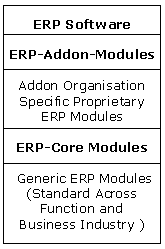|
  Kaytek IT - ERP Consulting Perspectives Kaytek IT - ERP Consulting Perspectives |
 Consulting
Consulting
 Software
Software
 ERP
ERP
 Entrepreneurs
Entrepreneurs
 CEO's
CEO's
 ERP Strategy
ERP Strategy
 Smart Implementation
Smart Implementation
|
  Kaytek IT - ERP Consulting Perspectives Kaytek IT - ERP Consulting Perspectives |
 How do organizations implement ERP smartly ? How do organizations implement ERP smartly ? An organization must first understand those processes which are generic across organizations and may not add much unique value. These would be called as standard ERP Procedures. In addition, there would be organization-specific customized 'special' approaches. Both standard ERP procedures and organization specific customized 'special' approaches can co-exist. A smart organization uses an ERP solution's "out of the box, standard, accepted " procedures as a platform or foundation. This is a low risk mechanism that can minimize implementation failures. |
 The ERP Implementation goal should be to help the company not only use the standard ERP out of box procedures for certain 'standard' processes, activities, functions. But also to try and build "special" customized approaches on top of the same to distinguish itself in the marketplace. It has to leverage the ERP solution to further enhance it's core strengths. |
But also to build certain customized special market place unique approaches on this standard layer. However, they should not fall into the trap of heavy customization. Good ERP software has modular changeable structures to address most customization needs. Most organizations claim 'highly customized' needs. With some research, they discover that most of their needs have already been thought of, designed, implemented, tested and withstood major upgrades in standard solutions. It is always advisable to go with a good standard solution to save the organization's current and future users ERP maintenance headaches. |
|
|
|
|
|
|
|
|